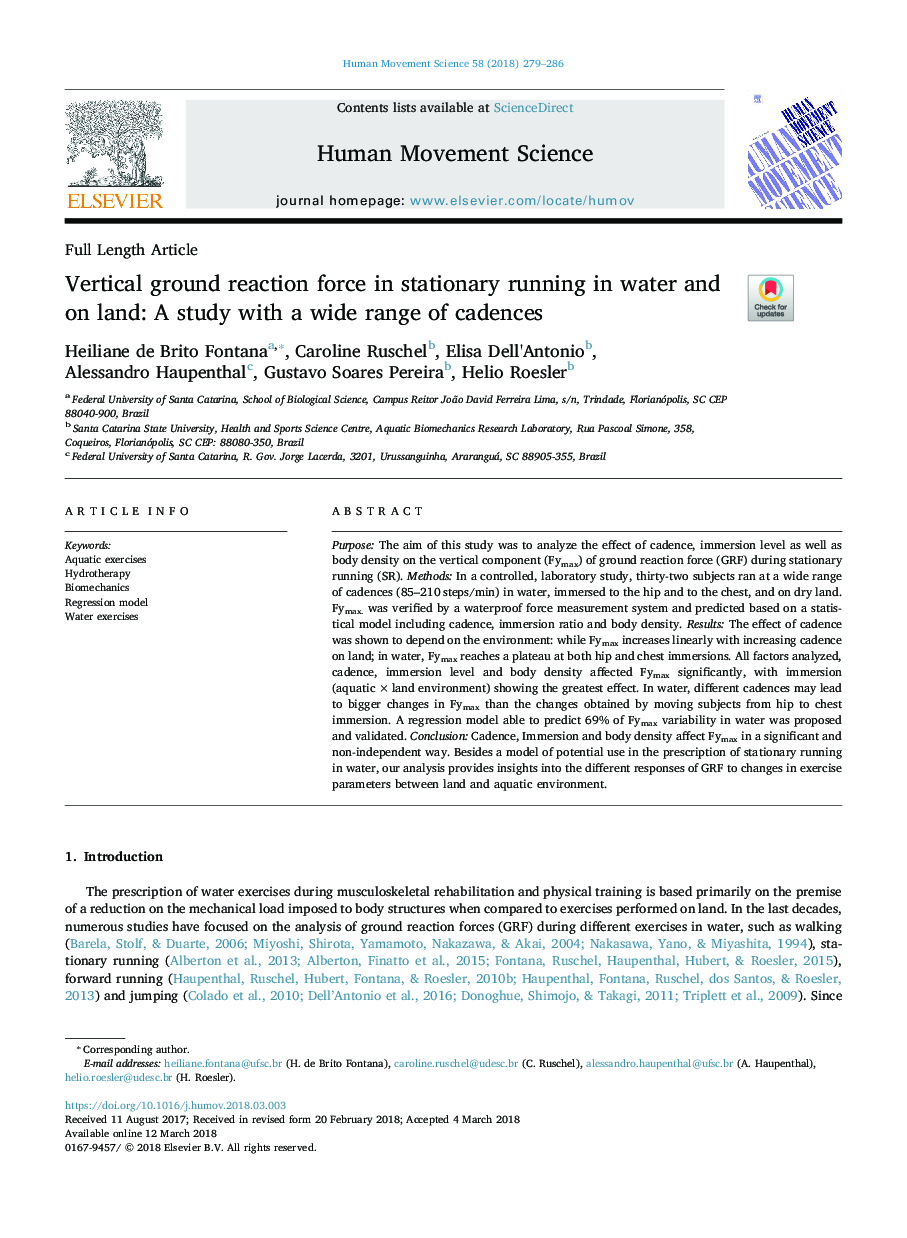| Article ID | Journal | Published Year | Pages | File Type |
|---|---|---|---|---|
| 7290954 | Human Movement Science | 2018 | 8 Pages |
Abstract
Purpose: The aim of this study was to analyze the effect of cadence, immersion level as well as body density on the vertical component (Fymax) of ground reaction force (GRF) during stationary running (SR). Methods: In a controlled, laboratory study, thirty-two subjects ran at a wide range of cadences (85-210â¯steps/min) in water, immersed to the hip and to the chest, and on dry land. Fymax. was verified by a waterproof force measurement system and predicted based on a statistical model including cadence, immersion ratio and body density. Results: The effect of cadence was shown to depend on the environment: while Fymax increases linearly with increasing cadence on land; in water, Fymax reaches a plateau at both hip and chest immersions. All factors analyzed, cadence, immersion level and body density affected Fymax significantly, with immersion (aquaticâ¯Ãâ¯land environment) showing the greatest effect. In water, different cadences may lead to bigger changes in Fymax than the changes obtained by moving subjects from hip to chest immersion. A regression model able to predict 69% of Fymax variability in water was proposed and validated. Conclusion: Cadence, Immersion and body density affect Fymax in a significant and non-independent way. Besides a model of potential use in the prescription of stationary running in water, our analysis provides insights into the different responses of GRF to changes in exercise parameters between land and aquatic environment.
Related Topics
Life Sciences
Neuroscience
Cognitive Neuroscience
Authors
Heiliane de Brito Fontana, Caroline Ruschel, Elisa Dell'Antonio, Alessandro Haupenthal, Gustavo Soares Pereira, Helio Roesler,
